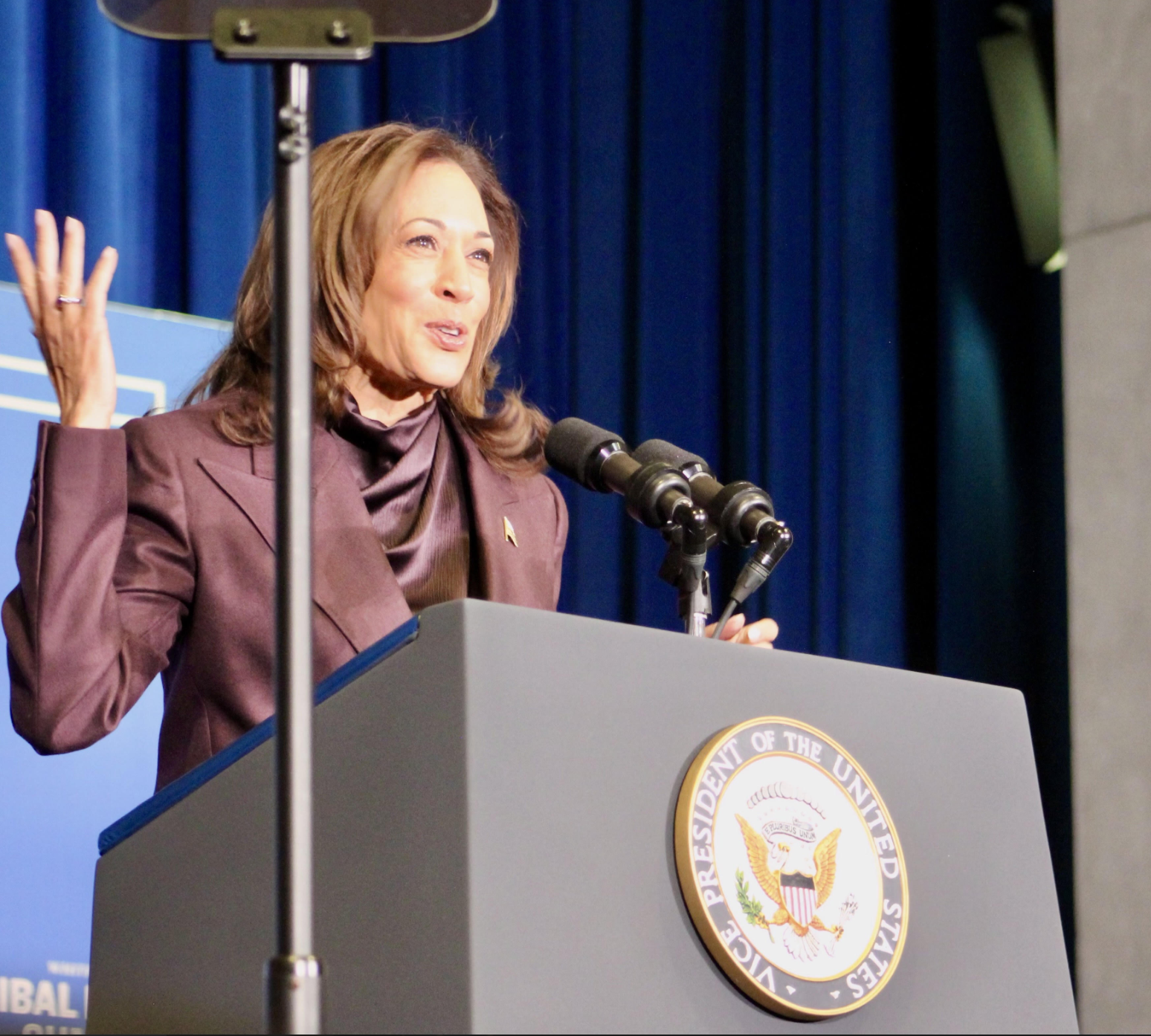
- Details
- By Neely Bardwell
WASHINGTON — In one of her first public appearances since narrowly losing to President-elect Donald Trump by 1.5% last month, Vice President Kamala Harris spoke to hundreds of tribal leaders and other attendees at the White House Tribal Nations Summit in Washington, D.C. on Monday. The vice president told the crowd the future is bright.
Before taking the stage, Harris met with a group of young Native American youth in the audience. She shared that she had offered them sage guidance, describing the conversation as a "lecture" in which she imparted valuable advice on resilience, strength, and perseverance.
“One of the things I said to them is that your leadership and your voice is so important, and we are so proud of you. And I said to them something everyone here knows: many times you will be the only one that looks like you in a room, be it a boardroom, a lecture hall, a meeting room, a congressional hearing. You may be the only one that looks like you in that room,” the vice president said. “But you always remember you are not in that room alone, that we are all in that room with you, and that when you walk in that room, we expect and demand that you will walk in that room chin up, shoulders back, carrying the voices of all of us who are so proud that you are there and are counting on you to lead.”
She went on to explain that today’s young leaders are “rightly impatient,” something the Vice President mentioned many times during her presidential campaign rally speeches.
“They [the youth] are not waiting for someone else to lead. They are prepared to lead.”
Vice President Harris, a passionate advocate for Native Americans throughout her public service, made her appearance at the final White House Tribal Nations Summit of the outgoing Biden-Harris administration, where she was greeted by an enthusiastic crowd.
“As vice president, I have had the honor to meet and work with thousands of Native leaders, from young leaders at our extraordinary Tribal colleges and universities, to advocates fighting to protect Native votes and voting rights, to union workers in Arizona and Native small-business owners from across the country,” Harris said.
“And here’s what I know to be true. Native communities are home to some of the most innovative, skilled, and determined people in America. And as we all know well, there is an extraordinary amount of ambition, aspiration, and ability across Indian Country; however, what is often lacking is the opportunity to pursue that ambition, aspiration, and ability,” Harris continued.
More Stories Like This
Native News Weekly (August 25, 2024): D.C. BriefsUS Presidents in Their Own Words Concerning American Indians
Star-Studded Livestream to Boost Native News Online’s Year-End Campaign
Monday Morning (December 8, 2025): Articles You May Have Missed This Past Weekend
Native News Weekly (December 7, 2025): D.C. Briefs
Help us defend tribal sovereignty.
At Native News Online, our mission is rooted in telling the stories that strengthen sovereignty and uplift Indigenous voices — not just at year’s end, but every single day.
Because of your generosity last year, we were able to keep our reporters on the ground in tribal communities, at national gatherings and in the halls of Congress — covering the issues that matter most to Indian Country: sovereignty, culture, education, health and economic opportunity.
That support sustained us through a tough year in 2025. Now, as we look to the year ahead, we need your help right now to ensure warrior journalism remains strong — reporting that defends tribal sovereignty, amplifies Native truth, and holds power accountable.
 The stakes couldn't be higher. Your support keeps Native voices heard, Native stories told and Native sovereignty defended.
The stakes couldn't be higher. Your support keeps Native voices heard, Native stories told and Native sovereignty defended.
Stand with Warrior Journalism today.
Levi Rickert (Potawatomi), Editor & Publisher


